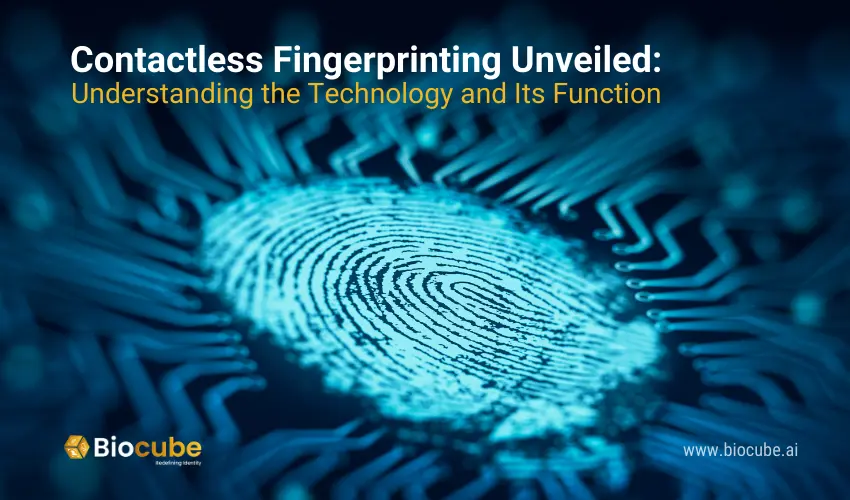
Contactless Fingerprint recognition technology has become widely popular among all age groups due to its rising use of securing devices and accounts. However, it has vast applications that go beyond traditional usage.
Global organizations are using it to track attendance, authorize admission into premises, issue visitor passes, and more. But what does contactless fingerprinting actually mean? Today, we are going to deep dive into its definition and its mode of functionality.
Read Also: Future of Face Recognition Technology
Table of Contents
What is Contactless Fingerprinting?
Most organizations use one or another form of contactless biometric technology, such as face, fingerprint, voice, palm, etc. Its market value reached approximately $7 billion in 2021 and is expected to rise to $37 billion by 2030.
Contactless fingerprint technology is one of the most commonly used biometrics, as it provides a high level of accuracy and records the availability of a person on the premises. By definition, it uses the patterns or structure of a person’s palm to authenticate authorization.
Unlike traditional fingerprint scanners, it doesn’t require physical touch and works frictionlessly through scanning technology. The most significant advantage of using it came during the pandemic, as the risk of catching contagious diseases became exorbitantly high.
Biometric scanning allowed organizations to curtail a low disease-risk environment within offices.
How Does Contactless Fingerprint Scanning Work?
Although biometric recognition seems like an effortless task for a commoner, it incorporates many steps in the background to avoid tampering or spoofing, which is very commonly found in touch-based scanners. In fact, most recognized touchless technologies undergo through these significant steps:
Capturing Fingerprints
The first step is to register a user onto a biometric system and link the fingerprints with the associated digital identity. Traditionally, users required imprinting their fingertips onto machinery; however, contactless biometric systems allow users to face their palms toward the camera and get it captured without hindrance.
KYC Vetting
The digital identities of an individual undergo a government-approved source or AI algorithm-driven source verification process. It allows one to associate a single identity with the organization’s account and the government source.
Moreover, the most significant benefit of this method is that it refrains from creating duplicate identities and allows users to use the same identity on multiple devices by undergoing a one-time registration process.
Note: The process is excluded by many companies that offer biometric machines and Contactless Biometric Technology.
Pattern Creation
The next step includes creating a digital pattern stored in the form of data on a device or the cloud. At this stage, it is best to ensure maximum background light to ensure the correct patterns get captured, which proves highly beneficial in avoiding tampering.
Don’t worry. The best companies secure such biometric identities with encryption or other technologies. The system identifies the fingertip strokes and patterns. It associates the structure with a digital identity and gives it a name in the format set by the organization.
Fingerprint Matching
The last step follows a 1:1 or 1:N matching process to identify the end user. The contactless system works on a device, platform, or app. Therefore, it uses the data on the cloud or physical storage device to recognize the end user.
The 1:1 matching process is for organizations with less number of users, as it is time-consuming and associates the fingerprints with each stored account before finally revealing the account holder.
On the other hand, 1:N technology can match the fingerprint of an individual with millions of registered users at once and authenticates the account holder within seconds.
Conclusion
Contactless fingerprint enhances the efficiency of an organization’s users. This advanced technology has allowed users to ensure authentication remotely and drained the security risk often associated with touch-based machines.
Moreover, the most recognized companies create digital biometric accounts after KYC verification, making them highly secure and risk-free for the end user as well as the organization. Such a facility isn’t available in traditional biometric machines.
Also, unlike commonly installed biometric systems, such technology comes with any limitation on the number of registered users. Schedule a demo with us to learn more about the advantages of contactless biometrics for your organization.